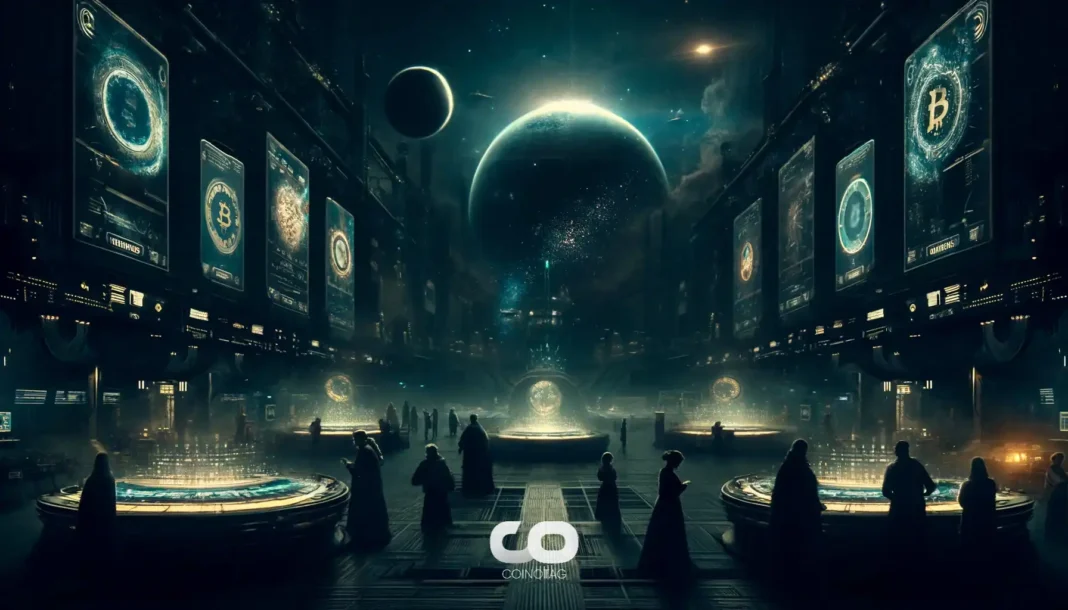-
The recent tension between Aptos and Monad has sent ripples through the crypto community, centered on accusations of technology infringement.
-
Aptos’s Director of Research, Alexander Spiegelman, claims that Monad has not properly credited Aptos for its foundational technologies, raising questions about ethical practices within blockchain development.
-
“The ramifications of this issue extend beyond just these two projects; it may set a precedent for how blockchain technologies are referenced and built upon,” Spiegelman stated.
Explore the significant allegations between Aptos and Monad regarding technology imitation, funding successes, and the implications for the crypto landscape.
Aptos vs Monad: Allegations of Technology Theft Erupt
The ongoing contention between Aptos and Monad highlights critical issues in blockchain innovation and ethics. Monad is recognized as a high-performance Layer 1 blockchain designed to be compatible with Ethereum (ETH) and has introduced advancements in key operational domains such as MonadBFT, Asynchronous Execution, Parallel Execution, and MonadDb.
Spiegelman has specifically accused Monad of emulating core elements of Aptos’ execution models and consensus frameworks. While acknowledging the collaborative nature of open-source technologies, he expressed disappointment at Monad’s apparent disregard for attribution regarding Aptos’ rigorous research contributions.
“I really don’t understand why it takes so much time for Monad to copy Aptos tech,” Spiegelman remarked, emphasizing the need for stringent ethical practices in technological development.
The heart of this conflict lies in the technology utilized by Monad. Spiegelman contends that Monad’s MonadBFT appears to closely mirror AptosBFT, an evolution of the Jolteon consensus mechanism. He further suggests that Monad adapted ideas from the earlier Diem project, now integral to Aptos.
In addition, Spiegelman compared Solana’s (SOL) approach of static parallel execution with Aptos’ advanced dynamic parallelism facilitated by BlockSTM, noting that although Monad has made modifications to BlockSTM’s execution, the foundational concepts largely originate from Aptos.
“One day, in 2029, when they finally release their code we will all see,” he stated, hinting at the potential for future scrutiny of Monad’s development practices.
James Hunsaker, Monad’s co-founder, strongly countered these allegations, asserting that there has been no direct copying and denying familiarity with Aptos’ code. His stance cites the concept of optimistic concurrency control, a technique well-documented since 1979, and emphasizes that his work with software transactional memory (STM) in the Haskell programming language predates Aptos.
Moreover, Hunsaker confirmed that Monad appropriately cites relevant consensus methodologies in its official documentation and research literature. Nevertheless, Spiegelman reaffirmed his position on the need for recognition of Aptos’ groundbreaking work.
He pointed out that BlockSTM is one of the rare software transactional memory systems to achieve successful deployment in real-world applications, noting that despite numerous studies, scalable solutions have only emerged with BlockSTM.
In spite of these controversies, Monad continues to thrive in the blockchain sphere. CryptoRank reports that the project recently secured $225 million in funding, spearheaded by Paradigm, showcasing considerable investor confidence. The launch of the testnet has also been well-received, demonstrating significant user engagement with over 334 million Remote Procedure Call (RPC) requests within the initial 12 hours.
Additionally, the distribution of testnet tokens to over 8.8 million active Ethereum addresses signifies a robust interest from both the developer community and prospective users, highlighting Monad’s potential growth trajectory.
Conclusion
The allegations of technological appropriation between Aptos and Monad underscore vital issues of intellectual property and ethics within the rapidly evolving crypto industry. As the situation develops, it remains essential for projects to maintain transparency and acknowledge foundational contributions in the broader blockchain community. The unfolding narrative between these two entities may serve as a pivotal case study for future blockchain innovations.






